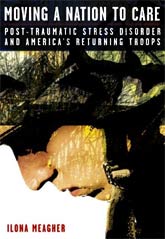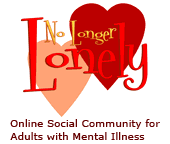Calendar
| «« | Sep 2007 | »» | ||||
| S | M | T | W | T | F | S |
|
1
|
||||||
|
2
|
3
|
4
|
5 | 6 | 7 | 8 |
| 9 | 10 | 11 | 12 | 13 | 14 | 15 |
| 16 | 17 | 18 | 19 | 20 | 21 | 22 |
| 23 | 24 | 25 | 26 | 27 | 28 | 29 |
| 30 | ||||||
archives
- September 2007
- August 2007
- July 2007
- June 2007
- May 2007
- April 2007
- March 2007
- February 2007
- January 2007
- December 2006
- November 2006
- October 2006
- September 2006
- August 2006
- July 2006
- June 2006
- May 2006
- April 2006
- March 2006
- February 2006
- January 2006
- December 2005
- November 2005
- October 2005
- September 2005
- August 2005
- July 2005
- June 2005
- May 2005
- April 2005
- March 2005
- February 2005
- January 2005
Search Box
Ai in the media
iVillage:
Treating post heart attack depression increases survival odds
Fox News:
PTSD continues to hit WTC rescuers and recovery workers hard
The Pulse Journal:
Baby cradling preference may reveal mother's stress levels
LinkBlog
Crying Shame - a Priory Group survey about stigma and mental illness in Britain (pdf)
6 Golden Rules for Conquering Performance Anxiety by David Leisner
Freedom from Fear's On Target Summer/Fall 2007 newsletter - an anxiety & depression resource (PDF)
Switching between monoamine oxidase inhibitors (MAOIs) and SSRI or tricyclic antidepressants (.doc format)
Contact
Mailing List
RSS Feeds
Translation
Disclaimer
Anxiety Insights is not responsible or liable for any diagnosis made by a reader based on the content of this website.
Anxiety Insights is not liable for the contents of any external internet sites listed, nor does it endorse any commercial product or service mentioned or advised on any of the sites.
Always consult your doctor if you are in any way concerned about your health.
blog roll
- Agoraphobia
- Anxiety 2 Calm
-
Anxious Living : An Exploration
into Social Anxiety - Dare to Dream
- Dear Tobacco
-
Dr. Deborah Serani's:
Psychological Perspectives - Fast Weight Loss?
- Finding the Confidence
- GNIF Brain Blogger
- Legacy of War
- Mental Health Minutes
- My Brain: My Friend, My Enemy
- My Wife Has Agoraphobia!
- Neurophilosophy
- Out of the silence - site for young people with mental illness
- PTSD Combat
- The Happiness Guy
- The Last Psychiatrist
- The Trouble With Spikol
-
WebMD: Anxiety and
Stress Management - We Worry: A Blog for the Anxious

recommended links
Weekly audio-casts from theDepression Is Real Coalition
-
ABIL: Agoraphobics Building
Independant Lives -
Agoraphobia and Panic
Disorder Foundation -
Anxiety Disorders Association
of America - Anxiety Network Australia
- Anxiety-Panic.Com
- AnxietyZone
- Army Behavioral Health
- BrainPhysics - OCD
-
Canadian Network for Mood
and Anxiety Treatments - Children of Hoarders
- Choices in Mental Health (UK)
-
Dart Foundation: Gateway to PTSD
information -
David Baldwin's
Trauma Information Pages - EMDR Institute, Inc.
- EMDR Network Japan
- Fear of Flying course (free)
- Healthy Minds
- Information for People with Anxiety Disorders
- Internet Guide to REBT, CBT
- Living with a Brain Disorder
- Morita Therapy
- Mayo Clinic : Depression
- Mayo Clinic : GAD
- Mayo Clinic : OCD
- Mayo Clinic : Panic Attacks
- Mayo Clinic : PTSD
- Mayo Clinic : Social Anxiety
-
Medicines.org.uk - Anxiety &
Depression guides - Mind-Your-Mind Canada
- National Center for PTSD
-
National Institute of Mental
Health (NIMH) - No Such Thing As Crazy
- OCD Action, UK
- OCD Ireland
- Obsessive Compulsive Foundation
- Open Minds, Open Doors
- Out of the silence - site for young people with mental illness
- Paniccure.com
- Partners With PTSD
- Prescription Drug Information
- Psychiatric Service Dog Society
- PsychNews
-
Rational Emotive Behavior
Therapy (REBT) - Sane Australia
-
Shyness & Social Anxiety
Service of Australia -
Social Phobia/Social Anxiety
Association - Social Anxiety Support board
-
South African Depression &
Anxiety Group - Suicide Prevention Help
-
tAPir - the Anxiety Panic
internet resource -
The Panic Center (Free
CBT based programs) - The School of OCD
- UN-WHO Drug Trials Database
- U.S. Army Behavioral Health - PTSD

"just don't smoke"

Yul Brynner
- Menthol cigarettes harder to quit
- Secondhand smoke in cars serious threat to kid's health
- Starting smoking young increases addiction risk
-
Smoking doesn't slim girls;
stunts boys' growth - 40 reasons why you should quit smoking
- Pregnant smokers 'prime' their kids to smoke
- Smoking related coronary artery disease quickly reversed if young smokers quit
- Not ready to quit? Try cutting back
- Half smoking again within year of lung cancer surgery
- Cutting back 'compensation' increases toxin load per cigarette
- Tobacco companies upped nicotine level 11% since 1998
- Workplace passive smoke increases lung cancer risk
- Hooked by genes: The DNA sequences cigarette companies love
- Smoking causes long lasting changes to brain's bio chemistry
- Nicotine receptor stimulant trebles the odds of stopping smoking
- Bupropion, nortriptyline double chances of quitting
- Nicotine's powerful role in reinforcing smoking
- Pregnant smokers raise child's risk of stroke, heart attack
- Smoking linked to pancreatic cancer
- Neurobiology of Smokers' Cravings
- 'Low cancer risk' cigarettes as deadly as regular kind
- Quitting reduces lung cancer death risk by 70%
- Fetal nicotine exposure linked to teen attention problems
- Outdoor second-hand smoke exposure can harm
- Response to day's first cigarette predicts ease of quitting
- 'Healthy' children of smoking parents aren't really so healthy
- Children of smokers have up to five times higher levels of a nicotine toxin
- Smoking increases risk of dementia
- Smoking kills even after quitting
- Antenatal second hand smoke exposure increases child's psychological problems
- Smoking could kill 1 billion this century: WHO
- Just 1 cigarette can lead to nicotine addiction
- Smokers less likely to survive early stage lung cancer
- Smokeless tobacco delivers carcinogens more efficiently than cigarettes!
- Smoking permanently turns on genes that increase lung cancer susceptibility
- Secondhand smoke a health hazard for pets too
anti torture campaign

- Torture experts write APA policy
- [APA] still rocked by torture debate
- Petition for psychologists
- AMA president says APA "did not accurately represent our ethical guidelines"
- Psychologists Aiding Torturers
-
Annual conference endorses
APA's torture policy :( - Physicians for Human Rights call on Congress to vote No on Military Commissions Bill
-
Torture is a Form of Trauma;
Trauma Causes PTSD - Psychoanalysts' association condemns torture use
- Humiliating, inhumane or degrading treatment IS torture
- Two American psychologists accused of war crimes. U.S. DoD investigating.
- DoD report proves psychologists central to POW/detainee abuse (pdf)
- 40 psychologists demand APA change policy on torture (pdf)
- Did the American Psychological Association turn a blind eye to torture for medicine precribing rights?
- Will psychologists still abet torture?
Deputy Army Chief of Staff for Intelligence, Lt. General John (Jeff) Kimmons, has stated that no actionable intelligence had been obtained through abusive interrogation methods in the last 5 years.
Human Relations Commission
monument, Monmouth County
New Jersey.
Hit Counter
since: 14 May 2006
Admin console
A developmental perspective on the controversy surrounding the use of SSRIs to treat pediatric depression
James F. Leckman, M.D. and Robert A. King, M.D.
Since the 1990s, there has been at least a 3- to 5-fold increase in the prevalence of antidepressant treatment for U.S. youths aged 2-19 years. Although children over the age of 10 were the most likely to receive prescriptions for antidepressants, this increase has been observed across all age groups. For example, Zito et al. documented that, from 1991 to 1995, preschool-age children (2-4 years old) had a 1.3- to 2.2-fold increase in antidepressant treatment. As documented by Gibbons et al. in this issue of the Journal, these dramatic increases continued until 2003-2004 when the Food and Drug Administration, as well as British and European regulators, issued public health advisories concerning the risk of suicide and self-harm associated with the use of antidepressant medication in the pediatric population. In the wake of these advisories, there has been a marked reduction in the number of prescriptions for selective serotonin reuptake inhibitors (SSRIs) in both the United States and Europe.
© 2007 American Psychiatric Association
tags: adolescent depression antidepressants ssris
links: digg this del.icio.us technorati reddit











